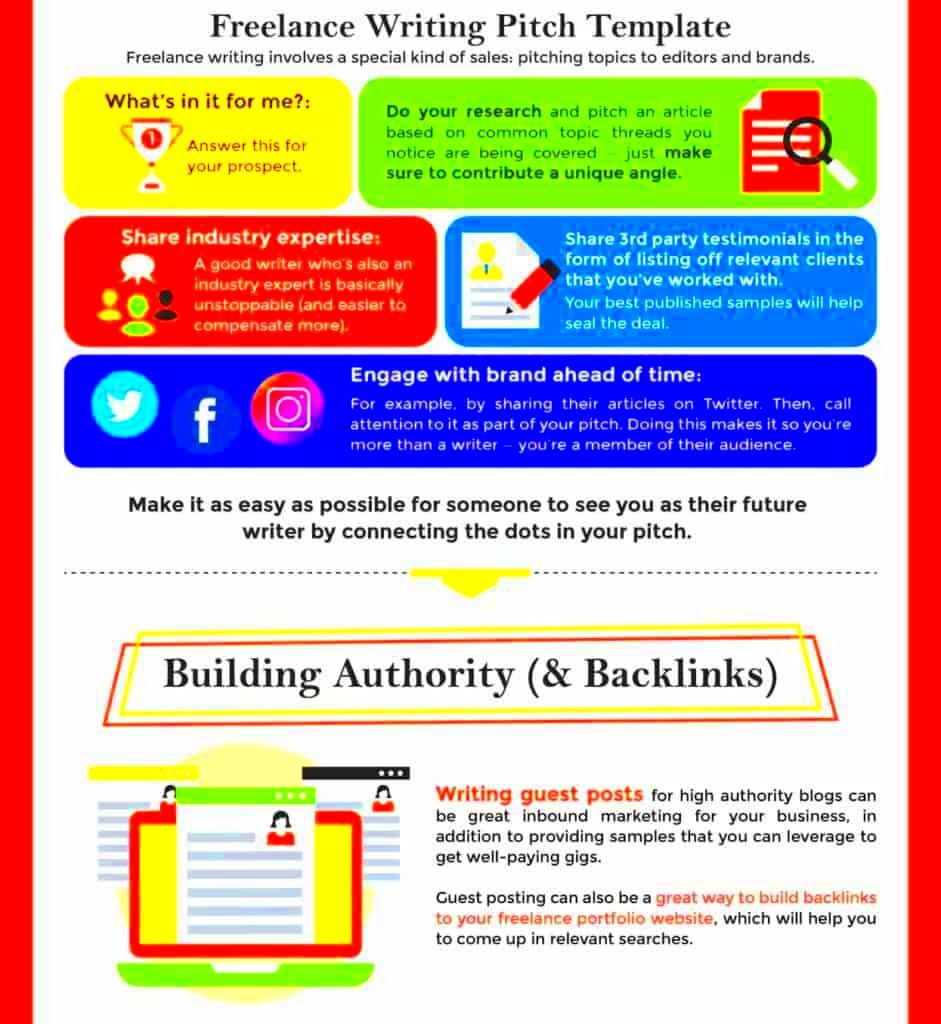Pitching your freelance services to companies can feel intimidating, but with the right approach, it becomes much easier. Whether you are just starting or have years of experience, knowing how to present yourself and your skills in the right way is key to landing clients. A good pitch demonstrates your value, shows you understand the company's needs, and makes it clear why you are the right choice for the job. In this post, we'll guide you through the steps of crafting a strong freelance pitch that stands out from the competition.
Understanding the Needs of Companies

Before reaching out to a company, it's essential to understand their specific needs. Every company is different, and tailoring your pitch to suit those needs will make you more appealing. Here's how to approach understanding a company:
- Research the company: Look at their website, social media pages, and recent projects to understand what they do and their values.
- Understand their pain points: Identify the challenges the company may be facing and think about how your freelance services can provide solutions.
- Know the competition: Check out who their current freelancers or agencies are. This can give you insight into their expectations and standards.
- Target specific departments: Rather than a generic approach, try to target specific departments (like marketing, design, or IT) where your skills are most relevant.
By understanding the company’s needs, you can position your services in a way that directly solves their problems and adds value to their operations.
Also Read This: How to Make an Offer on Fiverr
How to Create a Strong Freelance Pitch

Creating a strong freelance pitch means clearly communicating your value and expertise. It’s not just about selling your services, but about showing how you can help the company meet its goals. Here are the key elements of a successful freelance pitch:
- Personalized introduction: Start by addressing the company by name, and mention something specific about them (e.g., their latest project or their values) to show you’ve done your homework.
- Explain your services clearly: Don’t just list your skills; explain how your services can solve specific problems for the company. Focus on the value you bring to the table.
- Provide examples: Highlight previous work that’s similar to what the company needs. Include links to your portfolio or relevant projects.
- Be concise: Keep your pitch to the point. Companies receive many pitches, so make sure yours is easy to read and quickly conveys your value.
- Call to action: Finish your pitch by encouraging the company to take the next step, whether it’s scheduling a call, setting up a meeting, or reviewing your portfolio.
A strong pitch is not just about selling your services—it’s about building a connection with the company. By personalizing your approach and focusing on their needs, you’ll increase your chances of getting noticed.
Also Read This: How to Change Your IP for Fiverr and Nairaland
Best Practices for Reaching Out to Companies
When reaching out to companies, your approach matters just as much as the content of your pitch. A well-thought-out outreach strategy will increase your chances of making a positive first impression. Here are some best practices to follow when contacting companies:
- Timing is key: Send your pitch at a time when the company is most likely to be receptive. Avoid busy periods like holidays or end-of-quarter deadlines.
- Use the right communication channel: If possible, send your pitch via email, as it's more professional than social media. However, for some industries, LinkedIn or even direct messages might be more appropriate.
- Be respectful of their time: Keep your message concise and clear. Respect the company's time by getting straight to the point, without unnecessary fluff.
- Follow up tactfully: After sending your initial pitch, wait a reasonable amount of time before following up (typically a week). Be polite and express genuine interest in the company.
- Personalize your message: Avoid sending generic emails. Tailor your message to each company to show you’re genuinely interested in working with them.
By following these best practices, you’ll increase the likelihood of your outreach standing out and getting a positive response from companies.
Also Read This: Discover Sites Like Fiverr in India: Top Alternatives
Crafting an Effective Follow-up Strategy
Follow-ups are an essential part of the pitching process. Many companies may not respond to your initial pitch immediately, but a thoughtful follow-up can help keep the conversation alive. Here's how to craft an effective follow-up strategy:
- Wait for the right amount of time: Give the company enough time to review your pitch. A week or two is usually a good period to wait before sending a follow-up email.
- Keep it brief and polite: Your follow-up should be short, polite, and professional. Remind them briefly of your initial pitch and express your continued interest in working with them.
- Provide additional value: Use the follow-up as an opportunity to add more value. For example, share a new piece of work or an article related to their business that shows your expertise.
- Offer flexibility: Let them know you’re happy to discuss details at their convenience. Offering flexibility shows that you’re easy to work with.
- Don’t be pushy: If you don’t receive a response after two follow-ups, it’s best to move on. Being overly persistent can harm your reputation.
A well-timed and well-crafted follow-up can make all the difference in securing the freelance opportunity you're after. Just make sure to strike the right balance between persistence and respect for their time.
Also Read This: Do Websites Like Fiverr Still Exist?
Key Tools to Improve Your Freelance Pitching
To improve your freelance pitching process, there are several tools you can use to streamline your approach, enhance your pitch quality, and increase your chances of success. Here are some key tools to consider:
- Grammarly: This tool helps ensure your pitch is free from grammatical errors and is written in clear, professional language.
- Canva: If you’re creating a visual pitch or portfolio, Canva is an excellent tool for creating eye-catching designs without the need for graphic design experience.
- Mailshake: For outreach at scale, Mailshake can help you send personalized cold emails to multiple companies while tracking responses and engagement.
- Hunter.io: Use Hunter.io to find email addresses of key contacts at companies, ensuring you’re reaching out to the right people.
- LinkedIn Sales Navigator: LinkedIn’s Sales Navigator helps you find decision-makers at companies, allowing you to tailor your outreach more effectively.
- Google Alerts: Set up alerts for companies you're targeting so you can stay informed about their latest activities, which will help you personalize your pitches.
By using these tools, you can make your freelance pitching process more efficient, polished, and effective, giving you a better chance of securing projects with companies.
Also Read This: Top 10 Fiverr Gigs for Machine Learning in 2024
Common Mistakes to Avoid When Pitching
While crafting a pitch, it's easy to make mistakes that can hurt your chances of success. Being aware of these common pitfalls can help you avoid them and improve your outreach strategy. Here are some common mistakes to steer clear of when pitching your freelance services:
- Sending generic pitches: A one-size-fits-all approach won’t work. Tailor each pitch to the company you’re reaching out to, showing that you understand their needs and challenges.
- Overloading with information: Avoid overwhelming the company with too much information. Keep your pitch short and focused on the key points that demonstrate your value.
- Not showcasing relevant experience: Always highlight your most relevant experience and skills. Tailor your portfolio or examples to the type of work the company is looking for.
- Failing to follow up: Don’t just send a pitch and forget about it. A well-timed follow-up is essential for keeping the conversation going.
- Using unprofessional language: Your tone should be professional and polite. Avoid overly casual language, and always double-check for spelling and grammar mistakes.
- Ignoring the company’s needs: Focus on how your services can solve their specific problems. Don’t just talk about what you can do—show how it benefits them directly.
- Not having a clear call to action: Always include a clear next step in your pitch, whether it's scheduling a call, reviewing your portfolio, or discussing project details.
By avoiding these mistakes, you’ll ensure your pitch is professional, focused, and more likely to get a response from companies.
Also Read This: How to Sell on Fiverr Mobile: A Complete Guide
FAQ
Here are answers to some frequently asked questions about pitching freelance services to companies:
- How long should my pitch be? Keep it short and to the point. Aim for a few short paragraphs that explain who you are, what you offer, and why the company should choose you.
- How do I find the right person to pitch to? Look at the company’s website, LinkedIn page, or job postings to identify the right department or decision-maker. If you're unsure, reach out to the company’s general contact email and ask for the appropriate person.
- What’s the best way to follow up after sending a pitch? Wait about a week before following up. Keep it polite, brief, and mention that you’re still interested in working with the company. You can also offer additional value in your follow-up.
- Should I send multiple pitches to the same company? It’s okay to send more than one pitch if you haven’t received a response, but don’t overdo it. Follow up once or twice, and then move on if you don’t hear back.
- How do I stand out from other freelancers? Personalize your pitch, highlight relevant experience, and make it clear how you can solve their specific needs. A tailored, thoughtful approach will set you apart from others.
Conclusion
Pitching your freelance services to companies is all about presenting yourself in the best possible light while addressing the specific needs of the company. By following the best practices outlined here, avoiding common mistakes, and using the right tools, you can significantly improve your chances of success. Remember, it’s not just about selling your services; it’s about building a connection and showing how you can help the company achieve its goals. Keep refining your pitch, stay persistent, and always be professional in your approach. With the right strategy, you’ll be on your way to landing great freelance opportunities.




